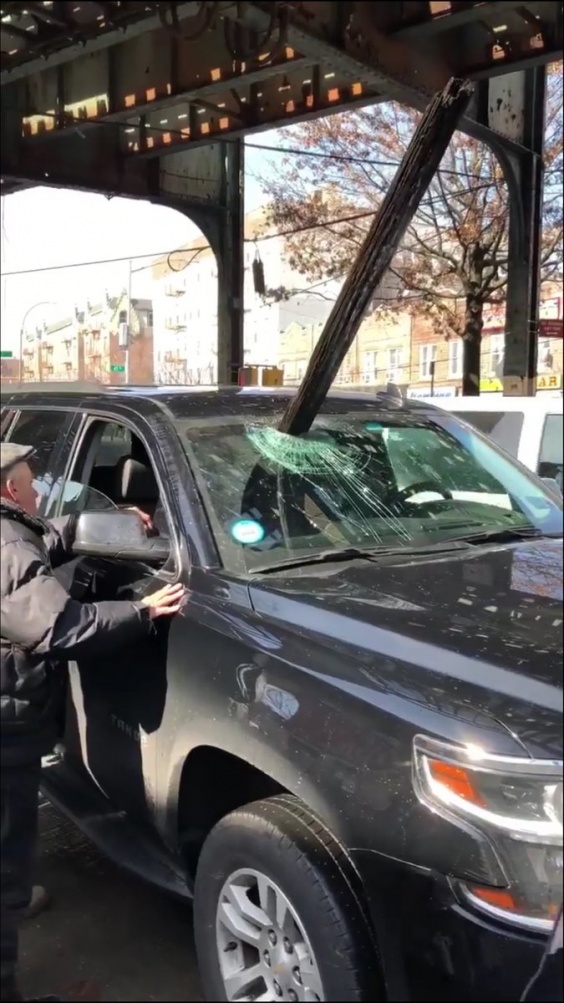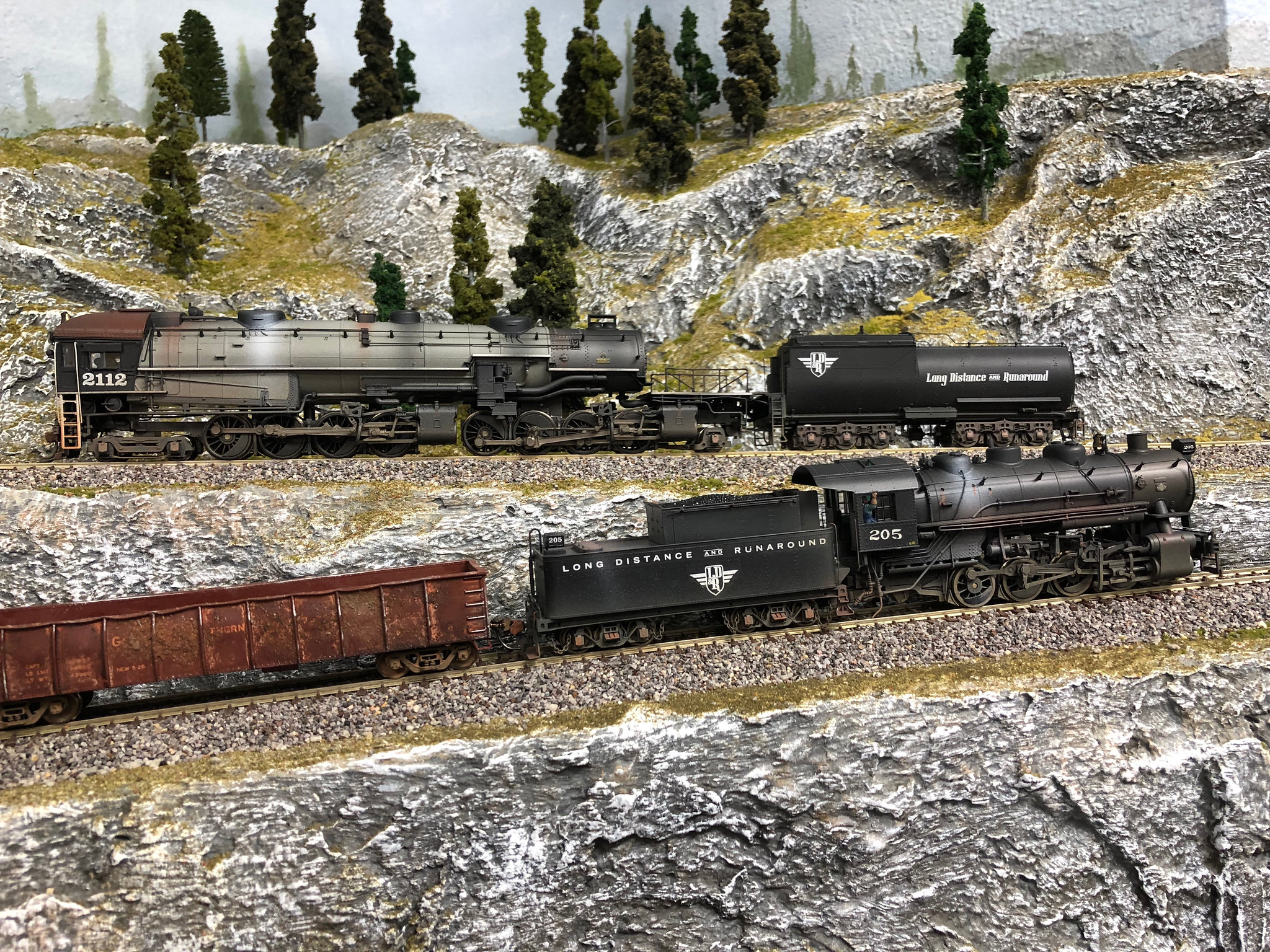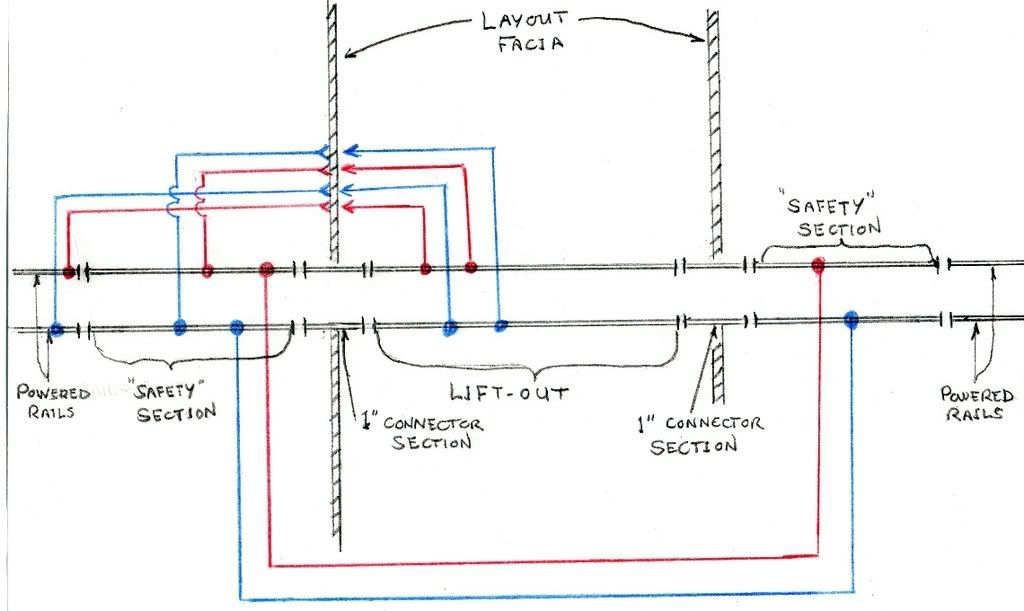.
That is really a good idea.
.
Seems basic, but I never thought of it.
.
-Kevin
.
.
That is really a good idea.
.
Seems basic, but I never thought of it.
.
-Kevin
.
(to constantly work on something under the layout)
And Roundabout fits Canadian Canyons very well - in and around the lake, mountains come out of the sky…
Hmm, now there’d be a fantasy layout, based off of one of Roger Dean’s paintings.
–Randy
Okay, so after 12 years of no accidents, I could not sleep knowing my Royal Hudsons would be the ones taking the plunge if anything was to do it, so I put guards across the four-foot span and now I can sleep once again.
Before
After
Fate is fickle.
You earned this.

.
That is an impressive record with such a dangerous looking drop.
.
-Kevin
.
What about that soft ping pong table netting? Mount a running length of it just below the track edge all around the layout. -Rob
Yep! Stupid is as stupid does.[^o)][(-D]
I didn’t want to get the Flying Fickle Finger Of Fate award but I see I was too late.[(-D]
That is exactly whaty they are doing in New York City. Putting netting under the elevated trains. Not that the trains would fall off, but enough tie plates, bolts lengths of steel and stuff like that fall off to damage parked cars ore even to impale moving cars.

ROARING !!!
How close to the edge can you get ???
![]()
ROARING
Some of you guys might get a kick out of this. Been trying to find a name for my entirley fictitious and non-protyoical layout, and my favorite band had named it for me in 1972. Sitting there right in front of me all along.

Definately! Good choice.
[tup][tup][tup][tup]
Like the herald design, and the weathering too.
Cheers, the Bear.[:)]
Thanks, Bear! This was actually my first loco weathering project. Its fairly quick and dirty, about 20 minutes of airbrishing on on each loco, and 10 minutes of random rust bits with a fine bristle brush. An insult to the true pros at this, but passes my personal 2 foot rule. Currently working on some Long Distance and Runaround F7 A-B sets with a pretty cool paint scheme. Hoping to get those done by mid-October.
Yes on the number 7 Flushing Line.
Oh the possibilities for scenic ideas, and town names. Don’t forget the crack express passenger train, the Siberian Khatru. If you stray into solo albums, be sure to have the town of Sunhillow. Oh, and nothing runs on a schedule, it’s all just Perpetual Change.
I was hoping you’d find this thread.
–Randy
So how does current keep-alive technology impact this decision.
Those locos keep running a long time after the signal from the track is cut. Maybe they’ll travel six inches on smooth terrain?
Or even worse, battery power.
That’s why I don’t like’em. Haven’t needed them yet, even up to #6 unpowered frogs. 6 inches? My little Walthers Plymouth switcher will run at least 6 FEET on my desk mat after lifting it off the rails if it was moving when I picked it up. If I have anything that actually NEEDS a keep alive, it will get a decoder that uses a 3 wire type, not a cheapy 2 wire one. At least with ESU decoders, with the 3 wire keep alives, you can set a CV that controls just how long it keeps going, rahter than just a generic “keep going until the cap is discharged”. You only need a second or so of power to get over a dead frog or small dirty spot on the track - if your track is dirtier than that, clean it.
To protect gaps for liftouts and so forth, now you need to either set it up so that a DCC Stop signal is generated, or there is a soft physical barrier for the loco to run into. Or the 3 wire keep alives, programmed to limit the run time.
–Randy
You can also wire the lift-out with a plug to energise it, but when unplugged, will also kill a length of track (as long as is necessary) on either side of the lift-out.
The sketch below shows the set-up, although I ended-up not using the 1" connector sections, instead including them as part of the lift-out…

Wayne
Yes but when the keep alive keeps the loco running for 6 feet or more after the power is cut - that’s a LOT of track to kill when removing the liftout. With a non-keep alive DCC loco or a DC loco, they stop as soon as they get on the dead track.
Of course, even if the locos DO stop dead, if you are backing the train towards the Gorge of Eternal Peril, you’ll push all the train on the floor and then the locos will stop. Or if you are running multiple units, they will keep going until the skidding of however many are past the cutoff gaps plus the weight of the train exceeds the ability of any units still under power to keep pushing. At which point they will sit there and grind U’s in the rail. Almost certainly still better than shocing an expensive loco to the floor, but without a physical barrier as well as electricla cutoff, there’s nothing foolproof.
–Randy
You’re right about that, Randy. I could, however, on my DC-powered layout, which is basically wired as a single block, have the removal of the lift-outs kill the entire layout.
I did, in another thread, I think, describe how a train did make it to the area of the not-in-place liftout, with the expected consequences. That’s because I didn’t bother to add that kill-the-power-at-the-lift-out feature to this layout. [banghead][:-^]
Wayne
[banghead]